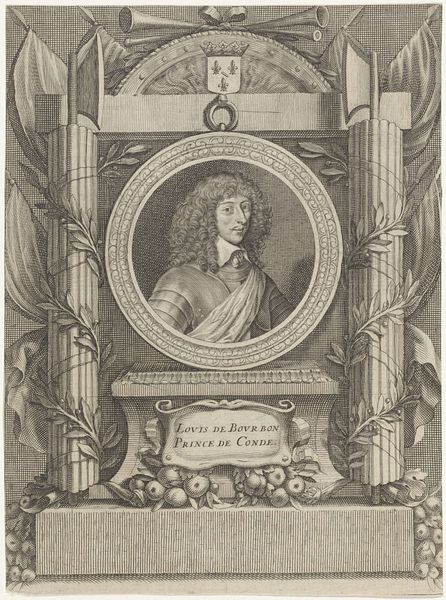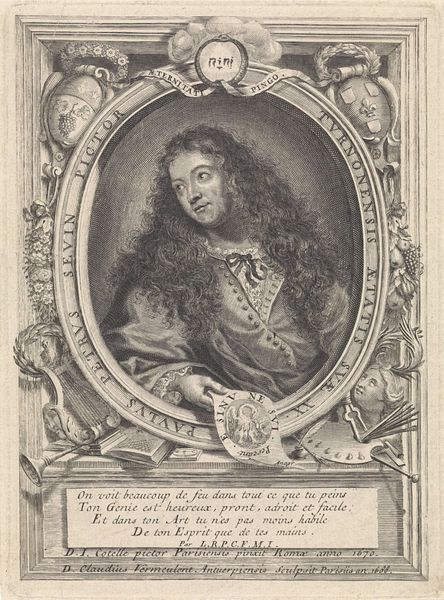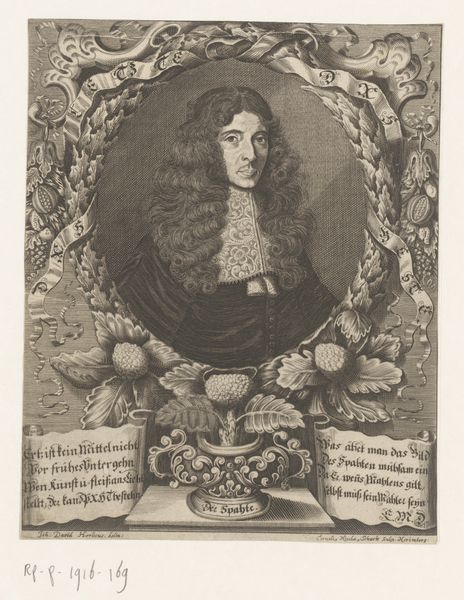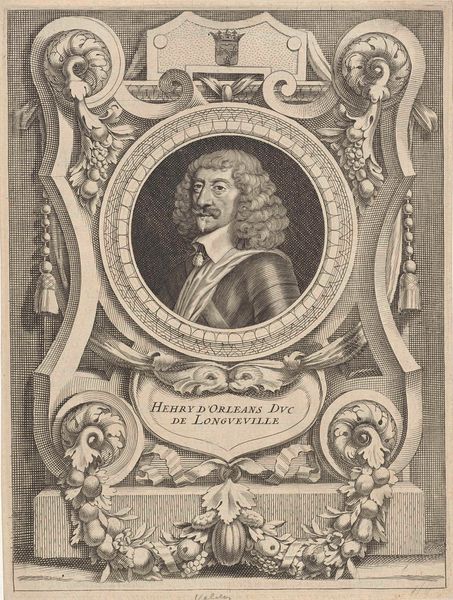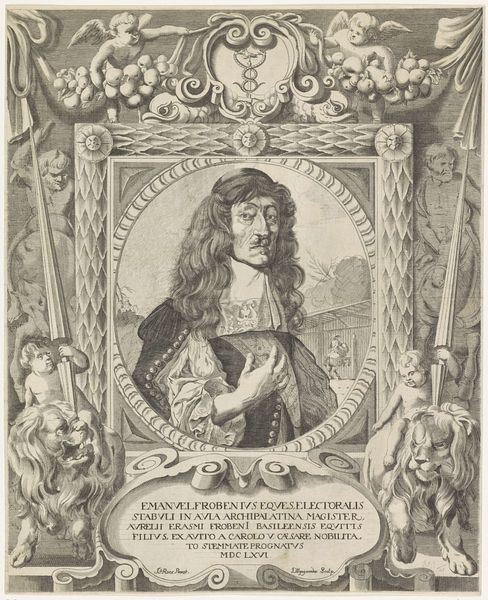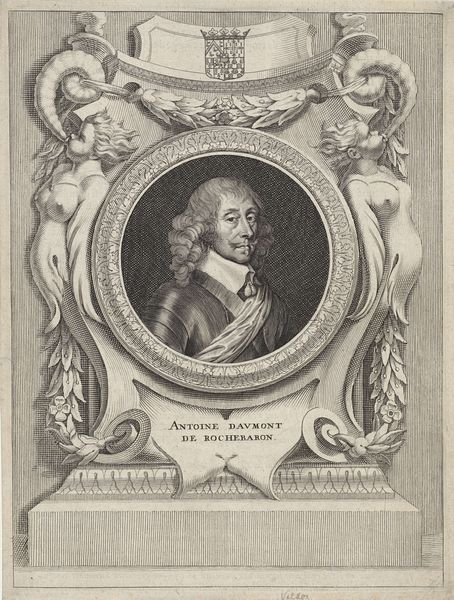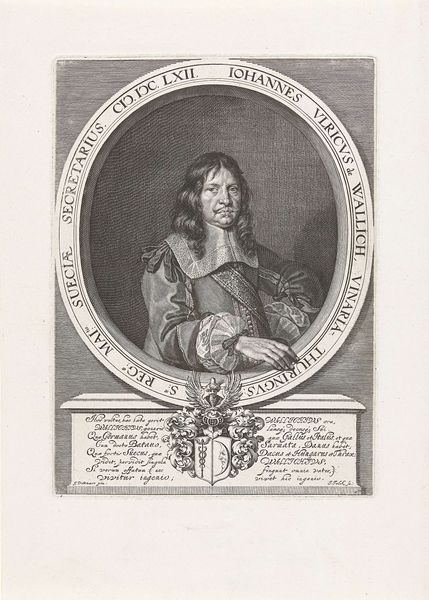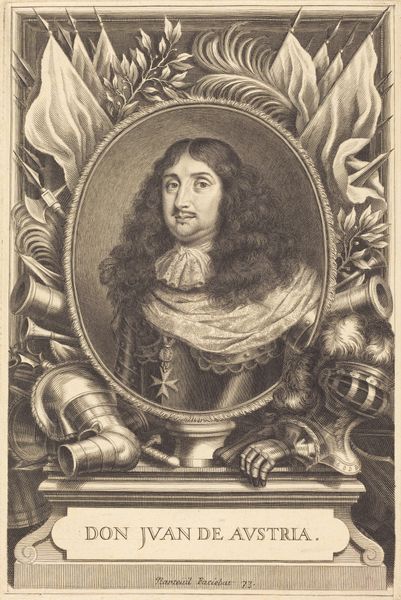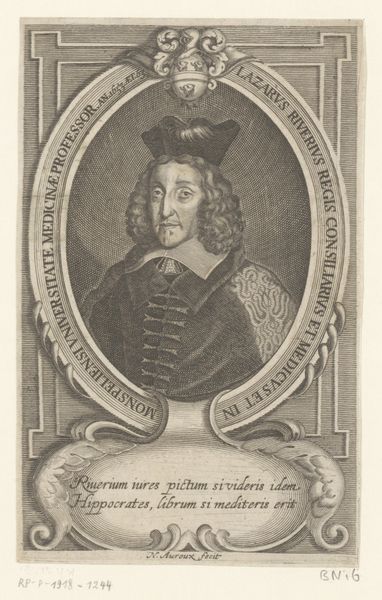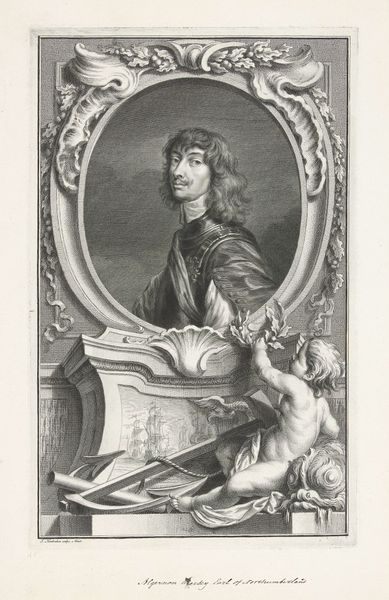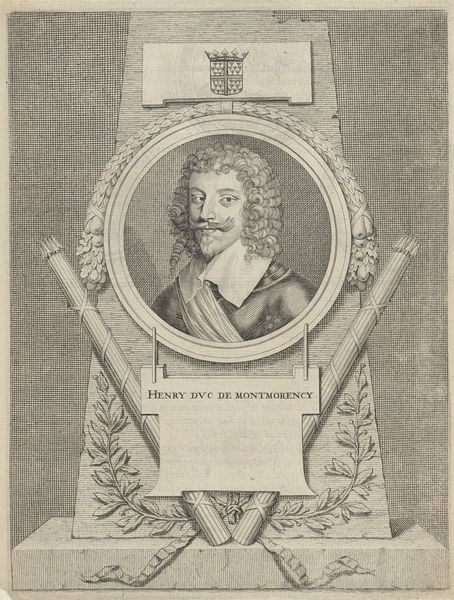
print, engraving
#
portrait
#
baroque
# print
#
history-painting
#
engraving
Dimensions: height 275 mm, width 205 mm
Copyright: Rijks Museum: Open Domain
Johannes Valdor the second made this print portrait of Charles de La Porte, the Duke of Meilleraye, sometime in the mid-17th century. It’s an engraving, meaning the image was incised into a metal plate, probably copper, using a tool called a burin, which pushes thin slivers of metal aside to leave clean, sharp lines. The plate would then be inked, and the surface wiped clean, leaving ink only in the engraved lines; the high pressure of the printing press would then transfer the image to paper. As you can see, it’s an incredibly linear medium. The image is entirely built up from hatched lines. The more densely they’re packed together, the darker the tone. The skill of the engraver is clear in the handling of the face; it’s quite a convincing likeness. But it’s also apparent in the incredible ornamentation around the portrait, which gives a sense of the Duke’s status. Consider the labor involved, the technical knowledge of metallurgy, and the physical effort of pulling a print. This was an image made to circulate, but also one that spoke to the hierarchies of its time. By considering its making, we can see this print as far more than just a portrait.
Comments
No comments
Be the first to comment and join the conversation on the ultimate creative platform.
